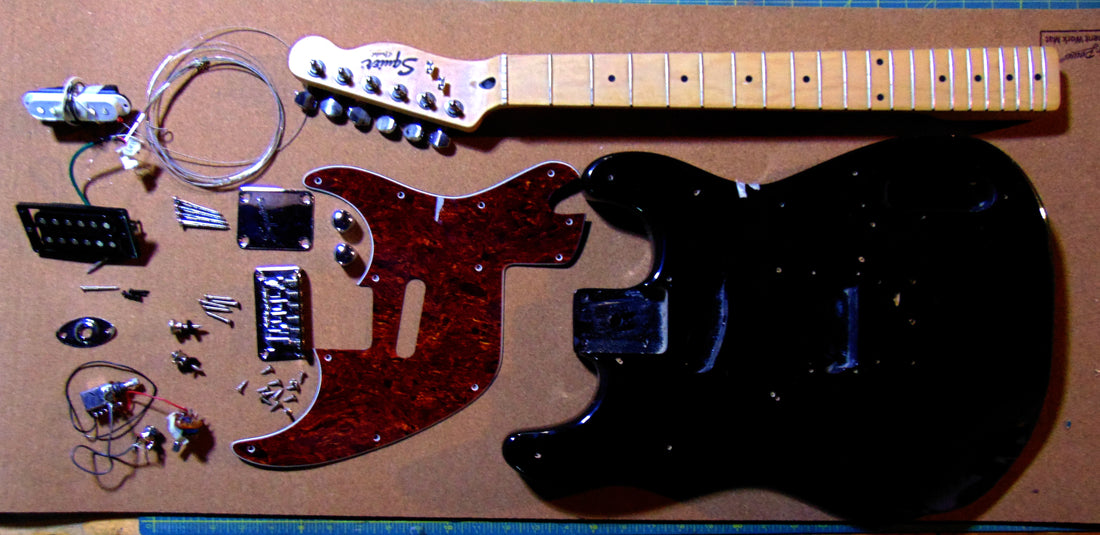Quite a long time ago, I bought a Squier 51 guitar used because it was cool, and a good deal, and I wanted something to modify into an art piece steampunk guitar. So I got started by disassembling it, and haven't had the time to get going on the customization I had planned. I'm in better shape for doing this today, at long last, but I'm not sure if I'm as interested in the steampunking part right now. There's still a lot of time commitments on my hands.
But this is a good proxy guitar to talk about how to create a partscaster, which is very popular these days, and a good first step to building or modifying your own guitars.
So here's a new blog series where we're going to talk about building a partscaster.
The first thing we may want to consider is why do we want to build a partscaster? There are so many Strats and Teles and variations out there, it's almost inconceivable that you can't find one that matches most of your desires. Maybe you want a specific color, or hardware, electronics, I get it. Maybe you want to take that first step towards building and that's phenomenal. Maybe you just want to learn guitar work better. Cool. We can do all of that. Ok. let's roll with it.
If you're definitely set on this path, get yourself psyched up, because it's probably going to be a little bit of a longer haul or more difficult operation than you think to a certain extent. It's by no means insurmountable. The -caster family is designed to be easy to build and modify, so it's a perfect platform for this. I think Leo Fender really needs a lot of commendation for his thinking here, because instruments were not built like this is the late forties and early fifties. There weren't bolt-on necks, pickups suspended in pickguards. This was a lot of new territory.
So cool. let's make some decisions. Strat? Tele? Something else? The parts are all out there for you.
Let's maybe start with the body. What do you want? Is it a color? A wood? A pickup combination? If you want a fairly stock body style like this, you can always go with the original, Fender, but their parts bodies are a little elevated in the price range. There's Warmouth, which is high quality, but also expensive. They have a lot of options for lesser priced bodies, and the ordering from China, which can be a crap shoot and a wait. I've had good luck doing this myself, but know people who have been burned. We here are More Gain Music are beginning to tool up to offer our own bodies for you, but that will be in Spring of 2021 at the earliest. and we'll be doing our own body designs as well as fairly traditional designs.
One thing you should think about before buy your body is finishing it. Most of us don't have a good spray booth at home, and spray can finishes are nowhere near what a good spray booth will do. Now, a temporary spray booth can be rigged up, and I've been told the Harbor Freight spray tools are just as good as the pro tools, but definitely won't hold up for long.
I've definitely done guitars with your basic Krylon gloss spray finish because I was fine with it, and getting a Matte clear finish is probably even better. All of this represents a cost of tools and materials to consider before you order up a body.
For the neck, I very highly recommend you buy one and don't try to build one. Most of the manufacturers I mention above are the people to look at for this part as well.
I'll go over parts and electronics in the next post, so maybe get your brain cranking on what you want for that when we meet up again.
We're going to leave this here for right now so you can consider your options, maybe make your first orders and get prepped.

